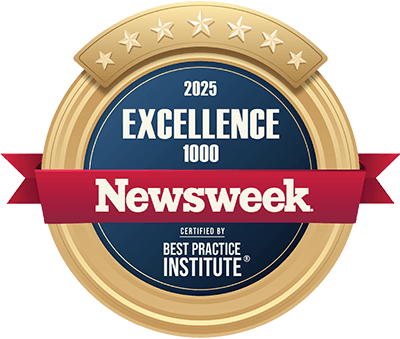Image Analysis Software Development Services
Since 2013, ScienceSoft helps both product companies and non-IT enterprises gain a competitive advantage by developing image analysis software.
Image analysis involves identifying attributes within an image using digital processing techniques to improve accuracy and reduce costs. Image analysis software development is the process of designing and building software that can process, interpret, and extract meaningful information from images using computer vision, AI, and digital image processing techniques.
Image Analysis Core Tasks
Detect
Distinguish regions of interest for further analysis, individual objects from the background, etc.
Recognize
Label or classify objects in digital images based on one or several object classes: people, vehicles, electronic components, etc.
Identify
Recognize individual features of an object and classify it with more precision: identify individual people, specific vehicles, animal species, device models, etc.
Why Partner with ScienceSoft for Your Image Analysis Project
- 36 years in C++ development.
- Image analysis consulting and development services since 2013.
- Data science and AI services since 1989.
- Established Lean, Agile, and DevOps processes.
- 750+ highly skilled employees on board.
- 150+ testimonials from satisfied clients across multiple industries.
- Scoping, cost estimation, risk mitigation, and other established project management practices to achieve project goals regardless of time and budget constraints.
-
ISO 9001 and ISO 27001-certified to assure the quality of the image analysis services and the security of the customers' data.
Our Domain Experience
ScienceSoft leverages expertise in 30+ industries to build your digital image analysis project:
Image Analysis Solutions We Offer
Facial recognition
Identification of a specific person’s face to provide exclusive services, identify suspects and trespassers, etc.
Emotion recognition
Assessing the level of a customer’s satisfaction to solve unique business challenges.
Grading and sorting
Object quality analysis for streamlined classifying and sorting.
Quality control (QC)
Checking for surface defects, foreign materials, discoloration, absence of components, etc.
Counting
Using an optical system to count similar objects on the production line or in a warehouse.
Computer-aided diagnosis
Reading X-ray images, CT, PET and MRI scans, ultrasound scans (including 3D and 4D), isotope scans, etc. Enhancing clinical images, measuring organ dimensions and blood flow, detecting pathological signs and suggesting a diagnosis.
Damage assessment
Identifying damage issues in complex electronic devices, vehicles, etc.
3D reconstruction
Producing 3D models from 2D data (e.g., medical scans).
Optical character recognition
Reading texts and number sequences (printed and handwritten).
Event detection
Identifying behavior anomalies and alarms in surveillance videos, counting people traversing a passage.
Organizing visual information
Indexing visual databases.
ScienceSoft’s Approaches to Image Analysis Software Development
Rule-based approach
For a small amount of visual data of low variability
- Excellent performance within a narrow domain.
- Doesn’t require big datasets.
- Performance can be easily validated.
- Explicability (every decision step is clearly seen in the code).
- Easy debugging.
For large datasets of unstructured data
- Deals better with complex objects and tasks.
- Doesn’t require explicit knowledge.
- Easier scalability.
- Lower operational costs.
Custom Image Analysis Software Development Workflow
1
Image analysis solution design
Defining how certain business problems should be solved with image analysis technology. Converting high-level business needs to software features, eliciting the requirements to image quality and recognition accuracy.
2
Business case creation
Outlining image analysis solution alternatives, providing business case calculations – ROI and TCO.
3
Software architecture (re)design
Developing the architecture while considering all the nuances that might affect image analysis system’s performance; enhancement and optimization of the existing image analysis software architecture.
4
Assessment and selection of implementation options
-
Third-party computer vision software API integration and customization.
-
Developing proprietary ML-driven technology from scratch.
-
Leveraging cloud services.
5
Image analysis implementation planning
Creating a detailed roadmap for developing and deploying the image analysis solution. It includes defining development milestones, selecting the technology stack, allocating resources, and establishing integration strategies to ensure smooth implementation and scalability.
6
PoC and prototyping
(if required)
7
Image analysis software development and integration
With hardware and third-party apps, IoT devices (sensors, cameras, controllers, etc.).
8
Manual and automated testing.
9
Image analysis software maintenance and support
Ongoing maintenance ensures the image analysis software remains efficient, secure, and up-to-date. This includes bug fixes, performance optimizations, software updates, and adapting the solution to evolving business needs or hardware changes.
Pricing Models for Image Analysis Software Development Services
Time & Material
- Good for agile iterative development.
- Applied to consulting services.
Fixed price
- Good for projects with a well-defined and stable scope.
Jump-Start Your Image Analysis Project with ScienceSoft!
Develop innovative image analysis software
Entrust your image analysis software project to a reliable provider with 35 years of experience in custom software development.
Upgrade software with image analysis technology
We assess your software and enforce it with the latest digital image processing technologies to address your pressing image analysis needs.







